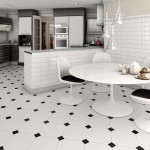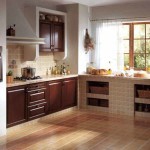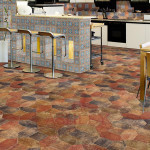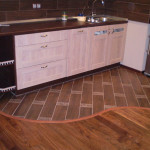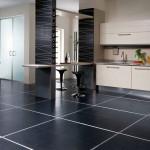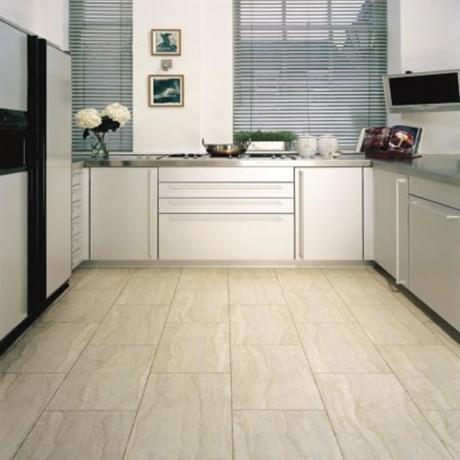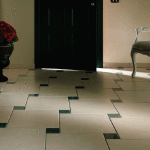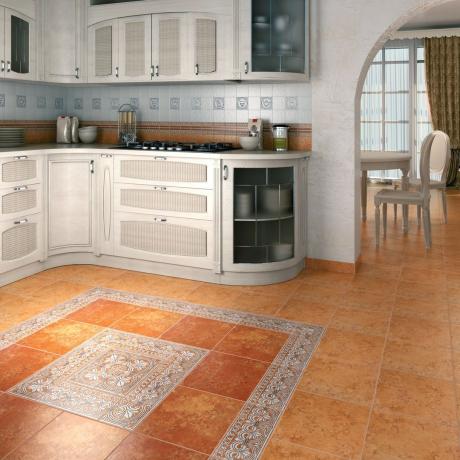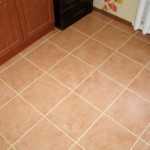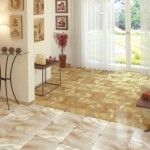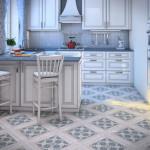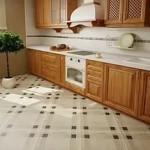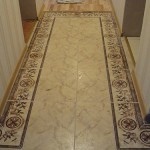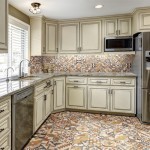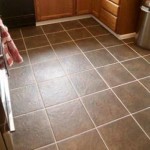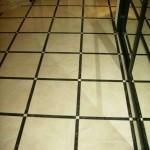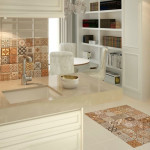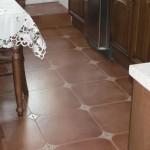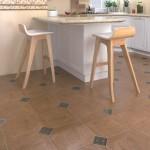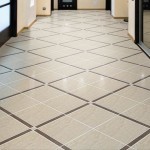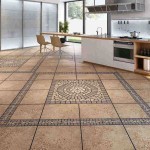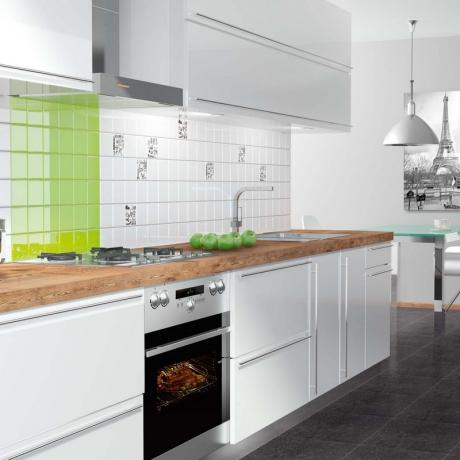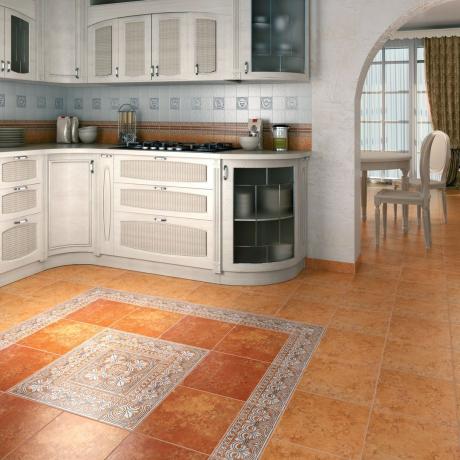Content
- 1 Tile characteristics - pros and cons
-
2 What to base your choice on
- 2.1 Technical indicators
- 2.2 Design characteristics
- 3 Conclusion
Ceramic tiles have been considered one of the most popular materials for kitchen cladding for several decades. Its amazing technical characteristics are able to decorate the interior and add comfort to the room. In order not to regret buying, it is important to know how to choose tiles for the kitchen on the floor and what nuances to pay attention to.
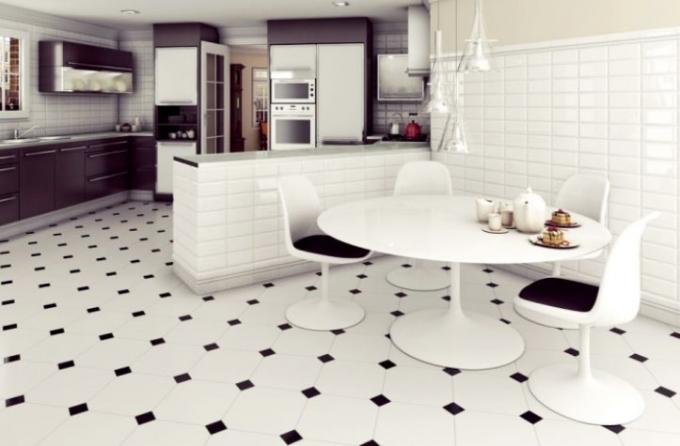
The choice of material should be based on its design, dimensions and characteristics.
Tile characteristics - pros and cons
Before choosing a tile for the kitchen floor, you should familiarize yourself with its main advantages. They will help you quickly decide on a purchase, or, conversely, refuse it.

Ceramic is one of the most wear-resistant and durable materials
The main advantages of ceramic tiles as flooring are:
- Durability. Proper care and careful use allow ceramics to be used for 15-20 years.
- Wear resistance. The kitchen is one of the most visited places in the house, therefore, for its cladding, it is necessary to choose practical and resistant materials, to which the tile belongs.
- Strength. Such a floor covering has high strength characteristics that are able to withstand high loads.
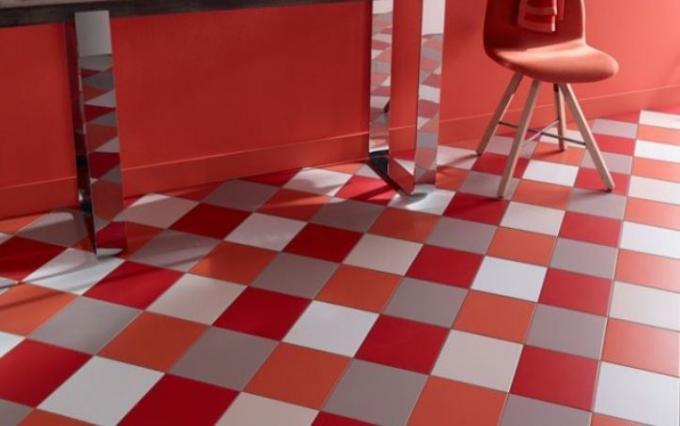
The tile is absolutely environmentally friendly and is not afraid of exposure to high temperatures and moisture
- Fire resistance. The tile is not afraid of high temperatures, which is very important for the kitchen space.
- Sustainability. Choosing a tile as a floor covering is an absolutely safe decision. The tiles are non-toxic and do not harm the environment.
- Resistance to chemicals. Since the flooring is especially prone to cleaning, it is important that it does not deteriorate from the effects of detergents. Ceramics, even after frequent cleaning, do not lose their decorative properties.

The tiles are not afraid of either the rays of the sun or household chemicals
- UV resistant. Neither color nor ornament on the tiles fade from prolonged exposure to sunlight.
- A wide range of. There is a huge selection of ceramics with various colors and textures on the market.
- Price. Ceramics are sold in various price segments - from budget options to more expensive models.
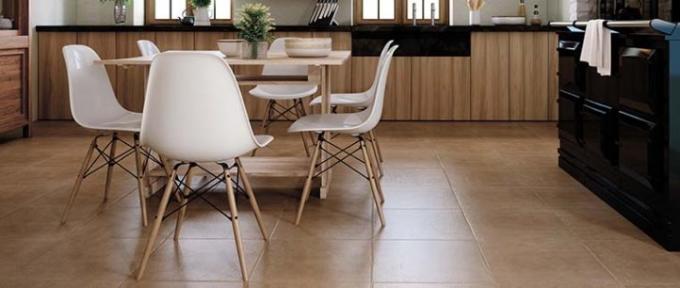
A wide range of products is presented in a varied price segment

The tile does not lose its appearance over a long period of use
Before choosing a floor tile for the kitchen, you should not be fascinated only by its main advantages. It is worth soberly approaches the purchase and make an informed decision. To do this, you need to familiarize yourself with the cons of ceramics.

Installation instructions for tiles are quite complicated, not everyone is able to cope with it
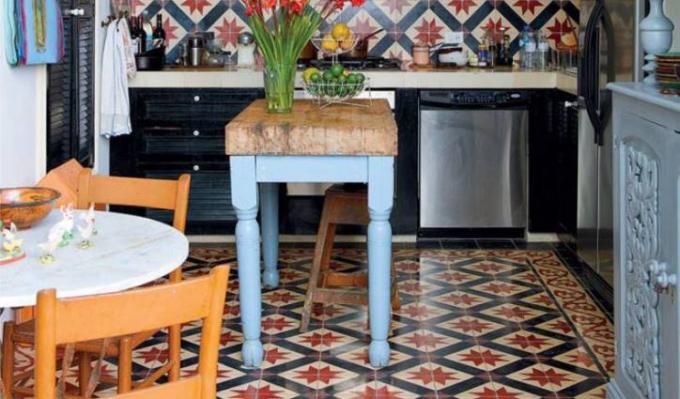
The ceramics are beautiful, but they are installed efficiently only on a perfectly flat surface.
Any material has drawbacks, including tiles. These include:
- Complexity of styling. It is very difficult to install tiles in the kitchen with your own hands (if you do not have the proper skills). This, in turn, increases the cost of paying specialists.
- Demanding surface. Tiles can only be laid on a perfectly flat surface, which again increases the cost of repairs. If there are voids under the base of the tile, then when a heavy object falls on it, the ceramics will break.

Pottery is a beautiful but finicky material
- Poor soundproofing. Such a surface does not have a high level of sound insulation. True, this problem can be solved - it is enough to lay a soundproof layer under it.
- Cold surface. If in summer it is pleasant to walk on cool ceramics, then in winter it is not so simple. Slippers or a "warm floor" system can solve the problem.

In winter, you can't walk barefoot on such a surface
What to base your choice on
In this section, you will learn how to choose floor tiles for your kitchen, relying not only on their design value, but also on their technical characteristics.

Coefficient of friction, wear resistance and hardness - these are what you should pay attention to when choosing a ceramic
Technical indicators
To choose the most convenient and practical option for flooring, it is important to know how to choose floor tiles for the kitchen, based on some safety criteria. What to look for?
- Wear resistance class. There are 5 classes of wear resistance in total. The higher the grade, the stronger the material will be. For the kitchen, you can choose models with 3 or 4 class. Grade 5 is intended more for public places (supermarkets and restaurants), buying material with a similar designation, you will simply overpay.
- Hardness. This parameter determines the level of resistance of the surface to scratches, impacts and other mechanical damage. Determine it on the Mohs scale; the seventh degree is suitable for finishing the kitchen.
- Friction coefficient. Wet tiles are incredibly traumatic, with the exception of high-quality models that do not slip even when wet. When thinking about which floor tiles to choose for the kitchen, opt for ceramics with a friction coefficient of at least 0.75%.

The photo shows some designations of the properties of the tile
You will get more detailed information on how to choose tiles for the kitchen from the video.
Design characteristics
Talking about how to choose tiles for the kitchen floor, one cannot fail to mention the design component. Even the best quality tiles will be a waste of money if the colors don't match the existing interior.

What color of tiles to choose for the kitchen will help determine the overall tone of the interior
When buying, pay attention to:
- Colour. Thanks to the light glossy coating, the room will visually become larger, dark ceramics can be used either in the presence of a large area, or with light furniture or decoration. The most easily soiled colors are white and dark, the most practical are gray, brown, beige.

Brown, gray and beige flooring shades are considered the most practical
- Interior style. What color to choose the tiles for the kitchen? It all depends on the interior of the room. For example, for a rustic style, it is better to choose ceramics that imitate a stone coating. Any kind of wood imitation tile is suitable for any decor. Minimalism will be decorated with monochrome options; ceramics with plant motifs are suitable for ethnic style.

Still wondering which tile color to choose for your kitchen? Just choose a wood look model - it will easily fit into any interior
- Tile size. Both the shape and the size of the modules significantly affect the visual perception of the room. Large squares will emphasize the spaciousness of the room, rectangular tiles will stretch it along.

Complex patterns on the floor can only be placed by owners of spacious rooms
- Ornament. A small repeating pattern on ceramics helps to visually reduce the space, making it more intimate and cozy. Solid matte surfaces are the best option for small kitchens.
Conclusion
Choose wisely tile for kitchen very important, because it defines coziness and comfort for years to come. Once you have familiarized yourself with the main factors to look out for when buying, buying a tile will be a breeze. Put this knowledge into practice and your flooring will delight you for years to come.
Gallery




